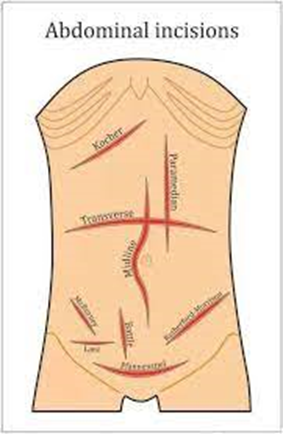A nurse is replacing a dressing for a client who has an abdominal incision with a closed wound drain. Which of the following actions should the nurse take?
Push the skin down while gently removing the tape.
Dry the incision with sterile gauze pads.
Lift the soiled dressing so that the underside faces the client.
Clean around the drain site using horizontal strokes.
The Correct Answer is C
Choice A Reason:
Pushing the skin down while gently removing the tape is incorrect. Pushing the skin while removing tape could cause unnecessary discomfort or trauma to the skin and the incision area. Gentle removal of tape without pulling the skin is recommended to avoid skin injury.
Choice B Reason:
Drying the incision with sterile gauze pads is incorrect. Generally, it's advisable not to dry the incision site with sterile gauze pads as this might cause trauma or disruption to the healing tissues. Patting the incision site dry or allowing it to air dry gently after cleansing is preferable.
Choice C Reason:
Lifting the soiled dressing so that the underside faces the client is correct. Lifting the soiled dressing in a manner that the underside faces the client helps prevent potential contamination of the wound by minimizing contact between the external surface of the dressing and the incision site. This technique reduces the risk of introducing pathogens into the wound during the dressing change.
Choice D Reason:
Cleaning around the drain site using horizontal strokes is incorrect. When cleaning around the drain site, it's typically recommended to use gentle and careful motions without specific emphasis on strokes, as this might cause friction or trauma to the area around the drain. Instead, using gentle circular motions or dabbing around the site is often advised for wound care.

Nursing Test Bank
Naxlex Comprehensive Predictor Exams
Related Questions
Correct Answer is A
Explanation
Choice A Reason:
"This type of device is useful for a client who cannot assist." This statement accurately reflects the purpose of a mechanical lift. Mechanical lifts are designed to assist individuals who have limited or no weight-bearing capacity, making them suitable for clients who cannot actively participate in the transfer process. These devices provide support and aid in moving the client safely and comfortably.
Choice B Reason:
"The lower end of the sling goes below the client's calves. This statement is incorrect. The lower end of the sling typically goes under the client's thighs, not below the calves. Placing the sling under the thighs provides proper support and stability during lifts and transfers.
Choice C Reason:
"The sides of the sling are for the client to hold on to." This statement is incorrect. The sides of the sling are not meant for the client to hold on to. The sling is designed to cradle and support the client's body during transfers, ensuring a secure and comfortable lift without relying on the client's strength.
Choice D Reason:
"The device requires the client to use upper body strength." This statement is incorrect. The primary purpose of a mechanical lift is to minimize the physical effort required from the client. These devices are designed to lift and transfer clients with minimal assistance from the client, reducing the risk of injury and ensuring a safe transfer for both the client and the caregiver.
Correct Answer is A
Explanation
Choice A Reason:
Recording the urinary output at the end of each shift is appropriate action. Furosemide is a loop diuretic that increases urine production. Monitoring urinary output is important to assess the effectiveness of the medication and to ensure that the client is not at risk for dehydration or fluid overload. Recording urinary output at the end of each shift provides a comprehensive overview of the client's renal function and fluid balance.
Choice B Reason:
Checking the urine for ketones every 12 hr is inappropriate action. Checking urine for ketones is not a routine assessment for a client with an indwelling urinary catheter and a prescription for furosemide.
Choice C Reason:
Collecting a 24-hr urine specimen to send to the laboratory is inappropriate. Collecting a 24-hour urine specimen is a more extensive test and is not typically needed for routine monitoring of a client on furosemide.
Choice D Reason:
Measuring the specific gravity of the urine during each shift is incorrect. While monitoring specific gravity can provide information about the concentration of urine, it is not usually required for routine monitoring in this specific situation. Monitoring urinary output is a more practical and clinically relevant approach.
Whether you are a student looking to ace your exams or a practicing nurse seeking to enhance your expertise , our nursing education contents will empower you with the confidence and competence to make a difference in the lives of patients and become a respected leader in the healthcare field.
Visit Naxlex, invest in your future and unlock endless possibilities with our unparalleled nursing education contents today
Report Wrong Answer on the Current Question
Do you disagree with the answer? If yes, what is your expected answer? Explain.
Kindly be descriptive with the issue you are facing.
